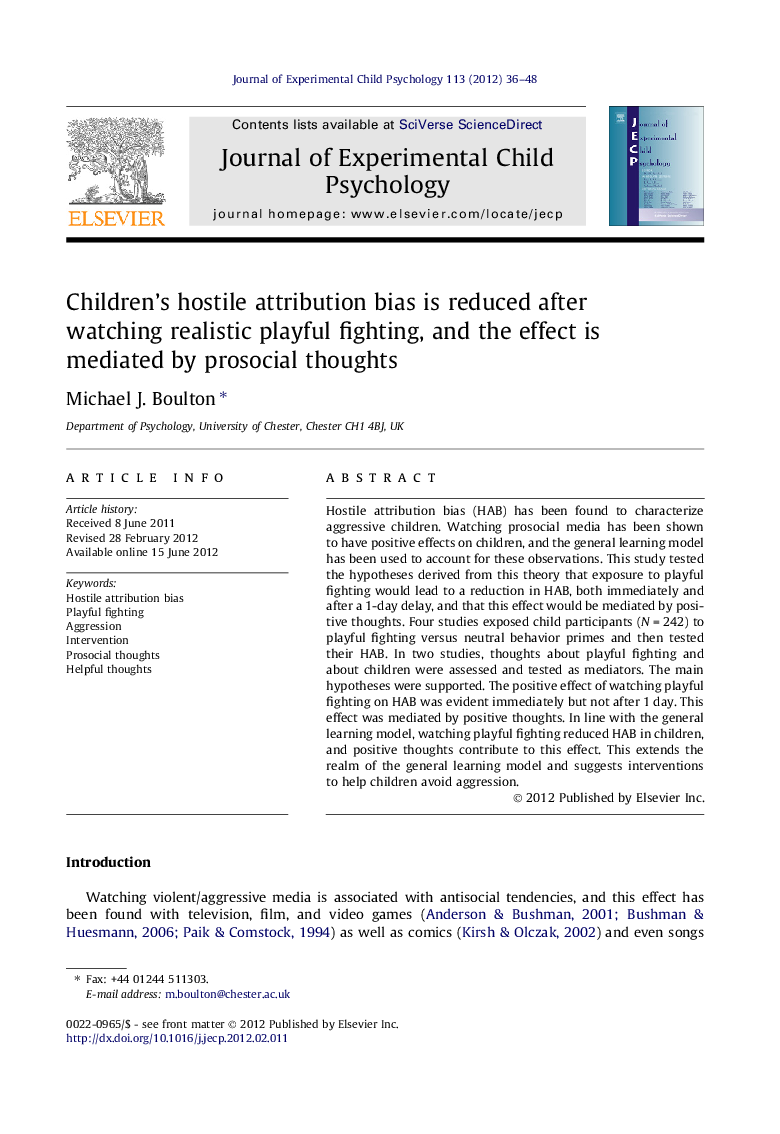| کد مقاله | کد نشریه | سال انتشار | مقاله انگلیسی | نسخه تمام متن |
|---|---|---|---|---|
| 918321 | 919472 | 2012 | 13 صفحه PDF | دانلود رایگان |

Hostile attribution bias (HAB) has been found to characterize aggressive children. Watching prosocial media has been shown to have positive effects on children, and the general learning model has been used to account for these observations. This study tested the hypotheses derived from this theory that exposure to playful fighting would lead to a reduction in HAB, both immediately and after a 1-day delay, and that this effect would be mediated by positive thoughts. Four studies exposed child participants (N = 242) to playful fighting versus neutral behavior primes and then tested their HAB. In two studies, thoughts about playful fighting and about children were assessed and tested as mediators. The main hypotheses were supported. The positive effect of watching playful fighting on HAB was evident immediately but not after 1 day. This effect was mediated by positive thoughts. In line with the general learning model, watching playful fighting reduced HAB in children, and positive thoughts contribute to this effect. This extends the realm of the general learning model and suggests interventions to help children avoid aggression.
► Examined effects of watching playful fighting versus neutral behaviour.
► Viewing playful fighting reduced hostile attribution bias immediately.
► Effect not found after a one day delay.
► Positive thoughts mediated this effect.
► Findings suggest new interventions to reduce hostile attribution bias.
Journal: Journal of Experimental Child Psychology - Volume 113, Issue 1, September 2012, Pages 36–48